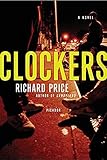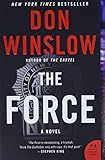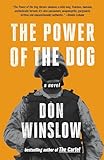How is it
that Don Winslow is not a household name?
I’ve spent the last few years plowing through the Winslow oeuvre, including his masterly Cartel Trilogy, and wondering why I still get blank looks when I mention his name. Yes, he occasionally gets a rapturous review, and, yes, his books sell. But how can it be that, as I write this, Lee Child’s umpteenth Jack Reacher novel and John Grisham’s latest lawyer tome are numbers one and two on the New York Times Bestsellers list for hardcover fiction while Winslow’s The Border isn’t even among the top 15? How can it be that, 20 years into Peak TV, we still don’t have any cable series based on Winslow’s relentlessly telegenic books?
I have no
answers to these questions. I just think America’s readers need to step up their
game.






 Crime writers, the good ones, anyway, are the poor man’s social historians. Open a Richard Price novel like Clockers and you learn the brutal mechanics of the drug trade in a gang-ridden urban housing project. Read Tana French and you see how the politics of social class roil just below the surface in the quaint neighborhoods of Dublin.
Crime writers, the good ones, anyway, are the poor man’s social historians. Open a Richard Price novel like Clockers and you learn the brutal mechanics of the drug trade in a gang-ridden urban housing project. Read Tana French and you see how the politics of social class roil just below the surface in the quaint neighborhoods of Dublin.
What sets Winslow apart is both the depth of his social insight and his versatility. Like the criminals they write about, most crime writers stick close to home. French writes only about Dublin and environs. Price’s books rarely leave New York and northern New Jersey. Winslow’s 18 novels range from surfer-dude Southern California (Savages and The Kings of Cool) to gritty New York (The Force), to the Mexican drug war (The Cartel Trilogy: The Power of the Dog, The Cartel, and The Border). He’s even set a few novels in Asia (The Trail to Buddha’s Mirror and Satori).
This would seem only a writerly parlor trick if it weren’t for the fact that each time Winslow drops into one of these wildly different worlds, you feel like he must have lived there his entire life soaking up social detail. Savages, the first Winslow book I read, exudes SoCal cool. The prose itself seems stoned, blissed out on some primo couch-lock weed that leaves you feeling both transcendently chill and hyper-aware. But then The Force captures world-weary New York, a cop-centric world of dishwater coffee and 4 a.m. cigarettes with a junkie informant jonesing for a fix.
Savages and The Force are first-rate
crime fiction, smart, well-written, and compulsively readable, but they don’t really
transcend the form. They’re merely good. But with the Cartel Trilogy, a
ripped-from-the-headlines fictional retelling of the drug war in Mexico and the
United States, Winslow holds a mirror to contemporary North and Central
American society in the same way Dickens and Balzac did for their
societies. He tells a story of ourselves and our age that we all know in our
hearts but would rather not have to hear spoken aloud.
The trilogy
focuses on DEA agent Art Keller and his Ahab-like obsession with stomping out
the Mexican drug trade, especially cartel kingpin Adán
Barrera, a ferociously violent philosopher-villain based loosely on real-life
drug lord Benjamín Arellano Félix. But if Keller’s pursuit of Barrera
and his fellow cartel leaders forms the narrative spine of the three long,
twisty, blood-soaked books, what sets them apart as fiction is Winslow’s
reckoning of the human cost of a long, senseless war waged in order to get
Americans high.
The sheer
body count of the three novels is staggering. Children are thrown off bridges.
Civilians are slaughtered in drive-by shootings. Cops and informers are
tortured to death in any number of gruesome and inventive ways. But Winslow
also spends long passages in The Cartel, the trilogy’s second book,
following a band of courageous Mexican journalists and a small-town mayor
trying to take back their town from the murderous cartels. In the most recent installment,
The Border, published earlier this year, Winslow follows a young boy’s intercontinental
journey to escape poverty and a sadistic gang enforcer in Guatemala, only to
find himself years later poor and enmeshed in gang life on the streets of New
York. The violence in these books is relentless and stomach-turning, but it’s
never mindless or gratuitous. This is a war, Winslow is saying, and this is
what war looks like.
I just wish more of my fellow Americans were willing to look.
More from A Year in Reading 2019
Do you love Year in Reading and the amazing books and arts content that The Millions produces year round? We are asking readers for support to ensure that The Millions can stay vibrant for years to come. Please click here to learn about several simple ways you can support The Millions now.
Don’t miss: A Year in Reading 2018, 2017, 2016, 2015, 2014, 2013, 2012, 2011, 2010, 2009, 2008, 2007, 2006, 2005
The post A Year in Reading: Michael Bourne appeared first on The Millions.
Source : A Year in Reading: Michael Bourne














